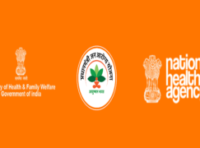Central Govt. has launched a nationwide water conservation scheme named Jal Shakti Abhiyan. In the 1st phase, the union govt. will focus on 256 districts and would encourage farmers to adopt efficient irrigation practices. Indian govt. led by PM Modi will gradually shift farmers towards less water-intensive crops and promote efficient irrigation.
The situation of water availability could get worse in the next few years, as India is highly vulnerable to the water crisis, especially in view of climate risks. So, govt. would also setup various Krishi Vigan Kendras in various states.
The 1st phase of the scheme will continue through the ongoing monsoon season i.e from 1 July 2019 to 15 September 2019. The 2nd phase would be rolled out from 1 October 2019 to 30 November 2019 for states with the retreating monsoon.
Jal Shakti Abhiyan – National Water Conservation Scheme
India is facing an acute shortage which is likely to get worse, so the govt. has launched Jal Shakti Abhiyan. This countrywide water conservation scheme focuses on 256 districts and 1,592 blocks with the lowest groundwater availability. Around half of the country is stressed with water. So, there is a need to start Jan Andolan (mass movement) in order to ensure that we can conserve water for future generations.
To date, Indian people are able to save only 8% of rainwater which is quite low. We must enhance our capabilities to store rainwater through rainwater harvesting. India’s per capita water availability has reduced from 1,816 cubic meters in 2001 to 1,545 cubic meters in 2011. Up to 2025, this per capita water availability is expected to further get reduced to 1,345 cubic meters.
Most of the districts with overexploitation of groundwater are present in the states of Rajasthan (29), Tamil Nadu (27) and Telangana (24).
Krishi Vigyan Kendras – Component of Jal Shakti Mission
The central govt. will also mobilize farmers through Krishi Vigyan Kendras and urges them to make a shift to efficient irrigation practices. Around 89% of water is used for irrigation in India, which is 3 to 5 times more as compared to other countries like China. So, there is a need to shift to less water-intensive crops and recharge our aquifers. One such initiative is started in Haryana where farmers are given financial incentives to shift from paddy to maize cultivation.
Implementation of Jal Shakti Water Conservation Scheme
Each district is going to draft a water conservation plan with the main focus on rainwater harvesting. All the nodal officers will work with urban local bodies (ULBs) for the reuse of wastewater for industrial and agricultural use. This Jal Shakti Mission will include segregation of grey water (kitchen) and black water (sewerage). Each of the urban areas will restore at least one traditional water body.
For more information click here.


![[Apply] MEITY Cyber Surakshit Bharat Training Calendar, Course List, Online Nomination Process, Registration Dates | Digital India Training Management Information System](https://sarkariyojanas.com/wp-content/uploads/2021/07/Cyber-Surakshit-Bharat-840x560.jpg)





